This is a 4-month-long Design Research project I participated, together with other three team members, during my exchange semester at Eindhoven University of Technology, Eindhoven, the Netherlands.
Takeaways
Created a Cultural Probe kit to collect 7 days of qualitative data from 6 participants.
Summarized the qualitative analysis process into a new research model - TADM (below).
Contributed to the development of alternative approaches for the future of home energy.
Introduction
This research project is about the future of home energy. Temperature regulation impacts household energy consumption. However, it is currently approached with uniform solutions, such as setting one temperature for an entire house with a thermostat.
With this exploratory research project, an alternative approach is proposed. The collective house temperature is broken down into its small contributors: Temperature Traces.
Based on the qualitative data collected by the cultural probe kit, the result views the occurrence of temperature traces based on four interconnected perspectives: location, object, individual, and social perspective.
This research incorporated the perspectives into a new approach called Thermal Aware Design Model (TADM) to better assist the design community. While emphasizing personalized experiences for temperature regulation in communal living and the collection of qualitative data from the users, TADM simplifies the analysis process of qualitative data and clarifies the relationship between thermal-related design and the complex needs of communal living residents.
Collecting qualitative data

The Cultural Probe Kit was carefully designed to meet a great experience for the participants in their approximately 7 days of probe test duration.
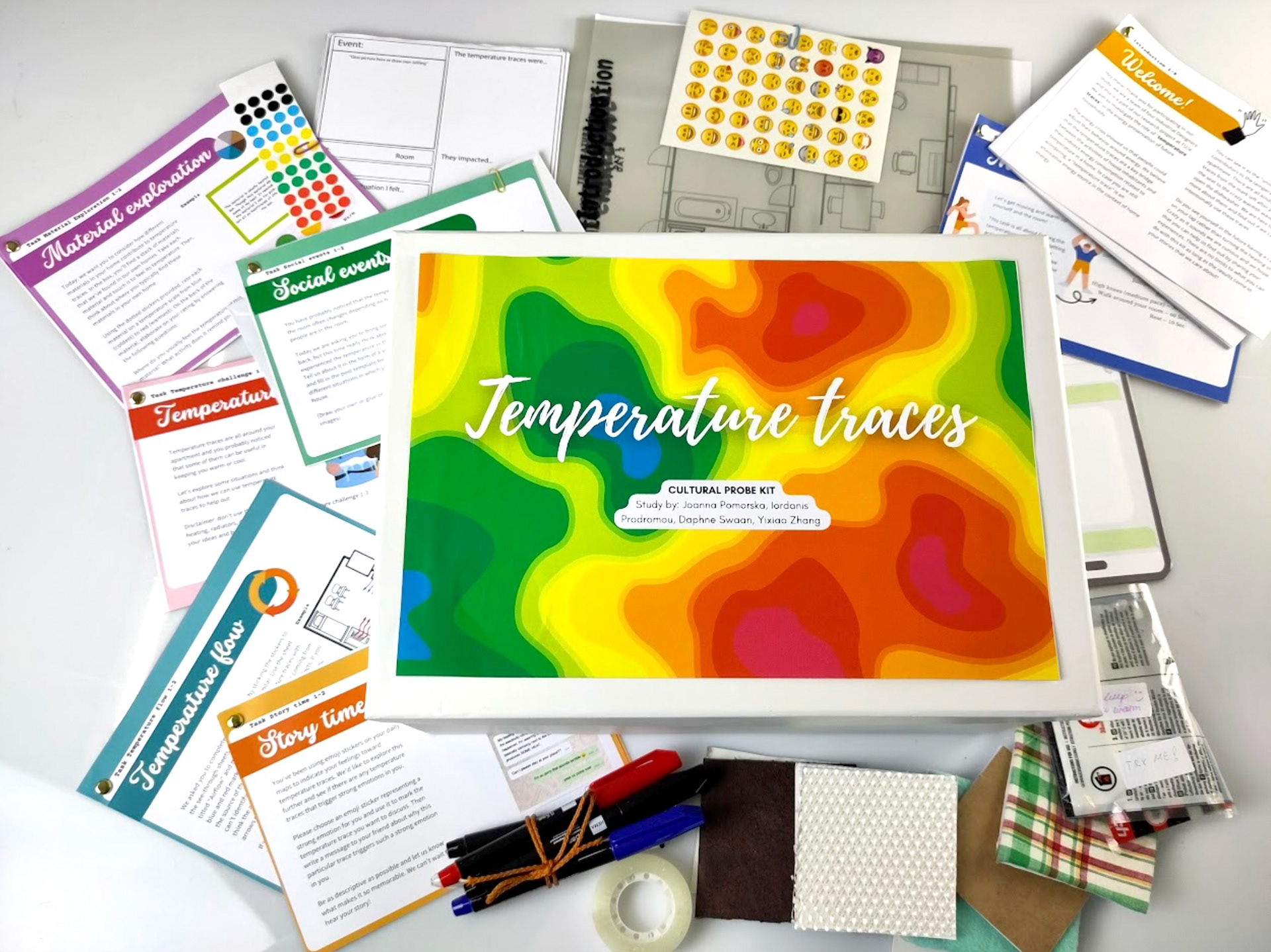
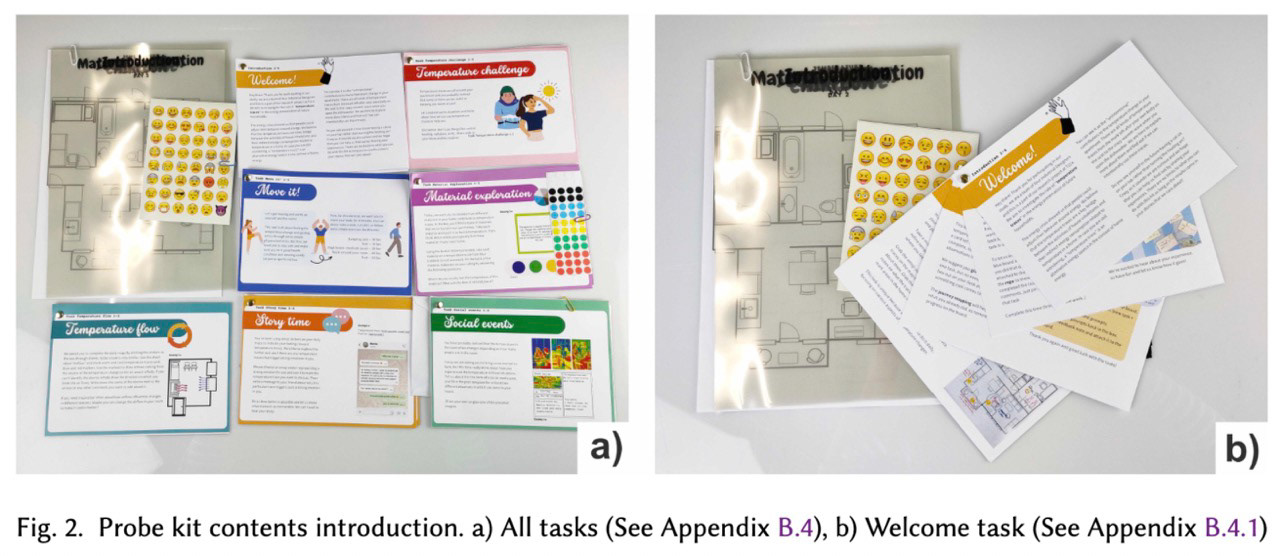
An overview of the Cultral Probe kit, including a labelled box, 7 different daily tasks, accessories for writing and drawing, emoji stickers for ratings, and gifts for the participants.
Analyzing qualitative data
The analysis of the collected qualitative data, relating to how the participants experience home temperature changes over a week, was conducted through carefully picking quotes and clarifying implicit needs.
Participants' names were anonymized to a temperature tag. (i.e. 21ºC)

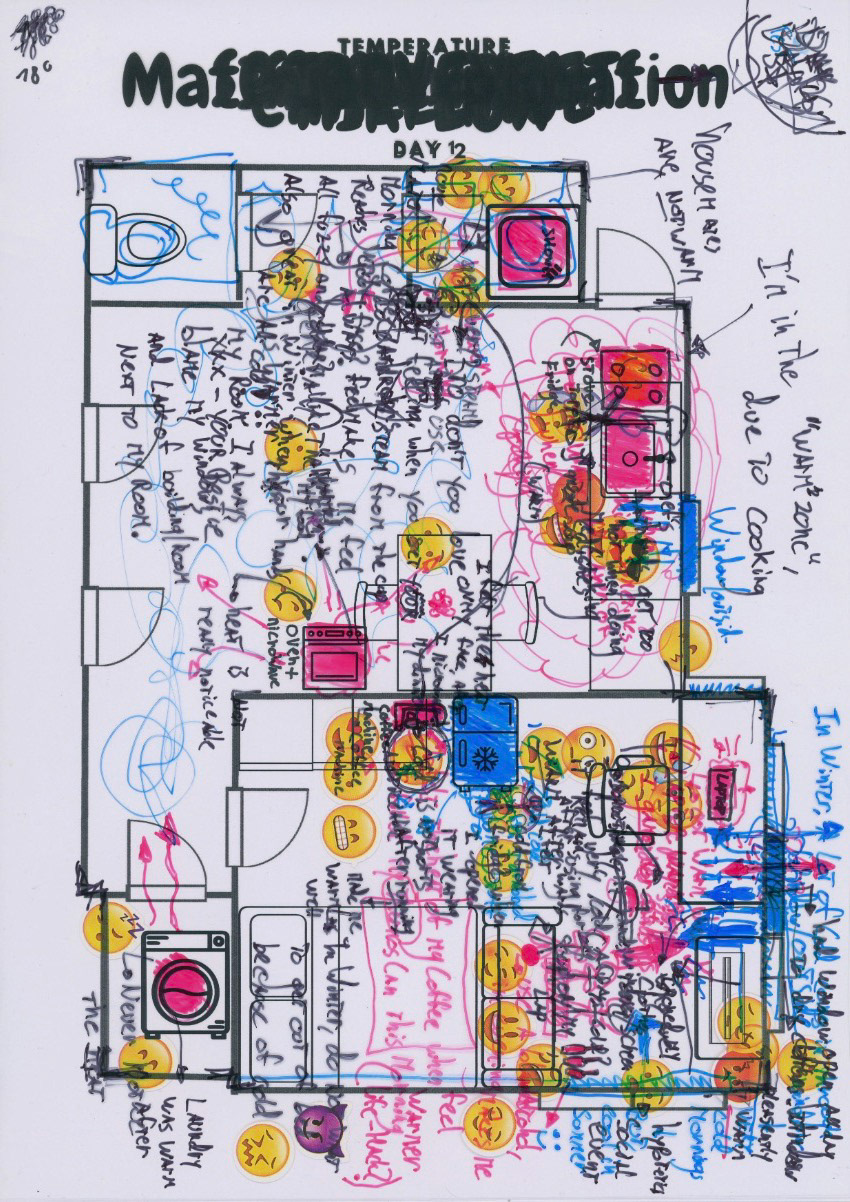
Quantitative methods were also deployed to evaluate the general trend of home temperature changes. As shown in the figure, seven days' of mapped temperature traces are overlapped together.
Conclusion: Thermal Aware Design Model (TADM)
The four perspectives of the probe kit results.
Qualitative data from the participants are categorized into four perspectives, Individual, Location, Social, and Object. all these factors are interconnected and interact with each other.
Individual experiences can vary from participant to participant. Even similar situations can lead to slight differences in experiences based on whether the entire room’s temperature was slightly adjusted or the temperature varied across the room.
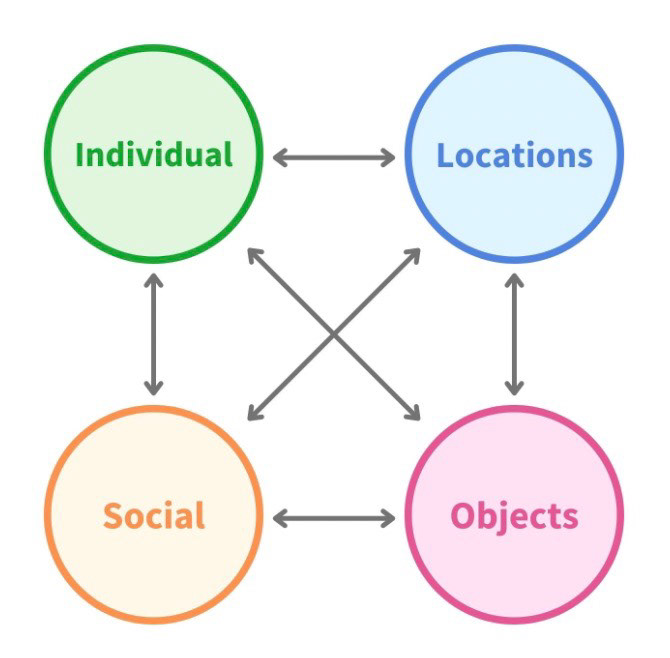
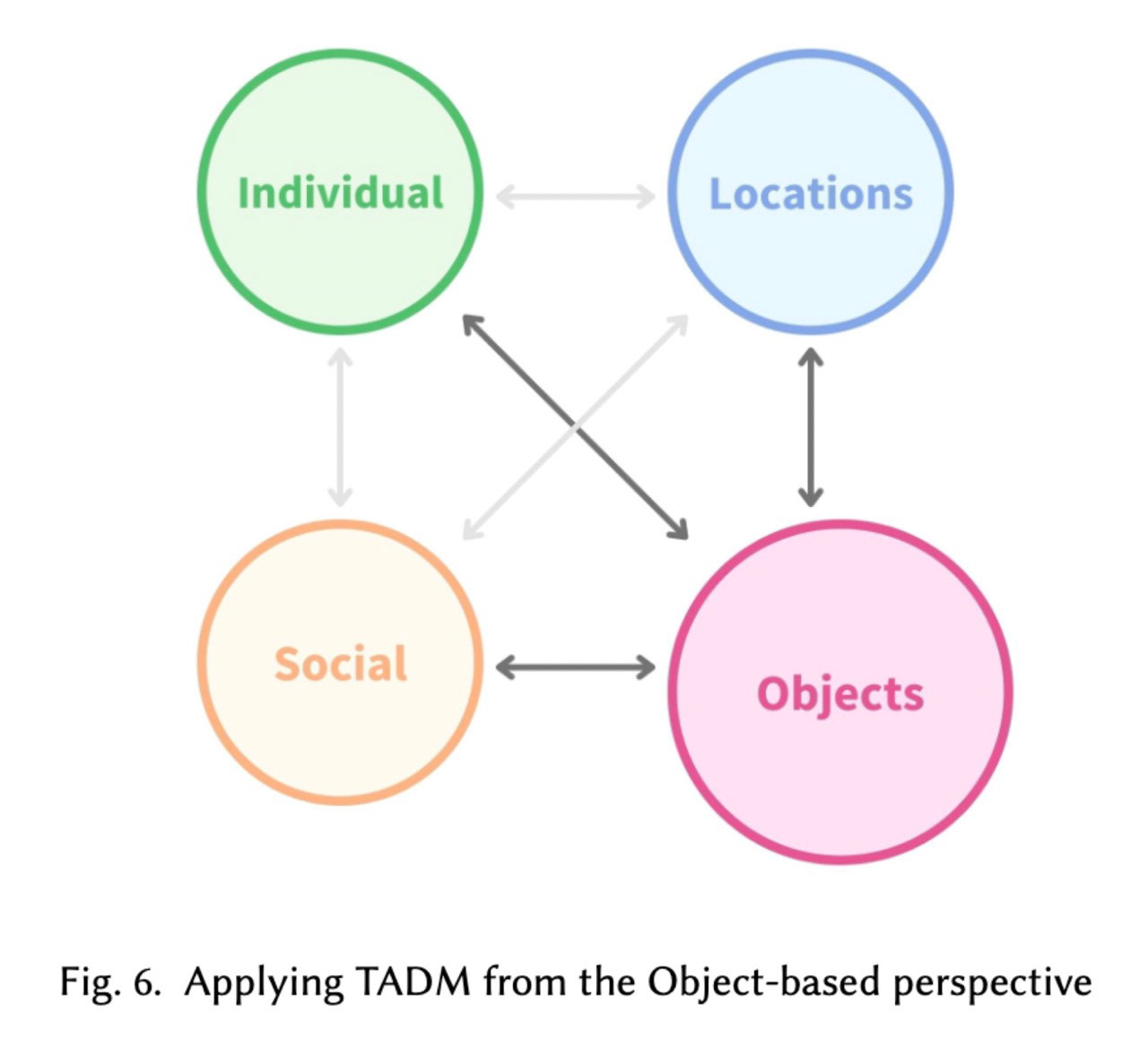
TADM provides a comprehensive and interconnected approach to thermal-related design.
It emphasizes personalized experiences for temperature regulation in communal living and the collection of qualitative data, such as the verbal description of life details, from target users.
While considering the design of shared housing, applying TADM assists in maintaining a continuous awareness of temperature traces. A new design in a form of a product or service can be placed in the middle of the diagram and connect to the proposed categories.
For detailed research process, please read the research paper below.
